Editorial cartoon by Don Lee for the Toledo Free Press.
Felony flag on the play!
Felony flag on the play!
The question I am often asked is whether or not parents should vaccinate their children. In fact, in our practice, there seems to be more resistance to vaccinations since COVID.
I personally feel that one of the reasons there is an increase in resistance is the recent fear that COVID vaccinations were going to be made mandatory across the board. Although my personal stance is in support of the majority of vaccines, I also believe that it should be a parent’s choice.
In human nature, when we tell somebody they “have to do something,” there is usually resistance and often a reaction to do the opposite. As strongly as I believe in most vaccines, I also feel as strongly that parents should have a choice.
As providers, I believe it is our job to educate parents about the risks and benefits of vaccines. We should be educating them about the diseases vaccines prevent, as well as teaching them about the repercussions of contracting the diseases. That should be in both verbal and written form at all of their well care visits. This is another important reason to have their scheduled well care visits, as set by the American Academy of Pediatrics.
I have frequently been asked, especially by other providers, why I will continue to see patients whose parents will not allow their child to be vaccinated. And I have a few reasons. To reiterate, I believe it is the parent’s right to make that choice for their child. It is also not the child’s choice; it is the parent’s choice, so by not seeing the child who are we, as providers, punishing?
If there are no providers that will see children who are not vaccinated, they will have to resort to using urgent cares and emergency rooms, as this will be the only form of healthcare available to them. Not only does this overwhelm the urgent cares and the emergency rooms for issues that should be seen in primary care office, it is also not good continuity of care for the child.
Also, in an urgent care or ER, you do not always see the same provider, and there is not a fluent record that can be read and obtained with each visit.
I think as providers we have to ask ourselves, why did we get into medicine to begin with? For me, it was to take care of patients, and I feel the best way to do that is to provide them with adequate education, good continuity of care, and to be available to them when they are ill. If I do not see unvaccinated children, I am not providing the care I feel is best for them.
With all that being said, here is why I think children should be vaccinated:
In conclusion, I do support the majority of vaccines, but I also strongly support the parent’s right to choose. I can respect any choice a parent makes, as long as it is an educated choice – and when I say an educated choice, it needs to be one that is made from medically sound, researched information, not from just anything that pops up on a Google search.
It is our job as providers to present that information and educate our parents, and then allow them to make the choice.


SYLVANIA – The annual LPGA Tour as we’ve known it, played on the rolling hills of Highland Meadows Golf Club in Sylvania for 40 years, has come to an end.
The tournament, originally the Jamie Farr Toledo Classic, has had several different sponsors over the years. Marathon, Kroger and, most recently the Dana Open, have all supported the Toledo event and helped it generate over $14 million for 215 Toledo area children’s charities.
Next year the tour will be called the Greater Toledo Classic hosted by Stacy Lewis, and in keeping with the tour’s charity tradition, proceeds from that tournament will be distributed to several Toledo-area children’s charities.
Toledo Classic, Inc. director Judd Silverman said he is very proud of the fact that the tournament has raised that large amount of charity funds.
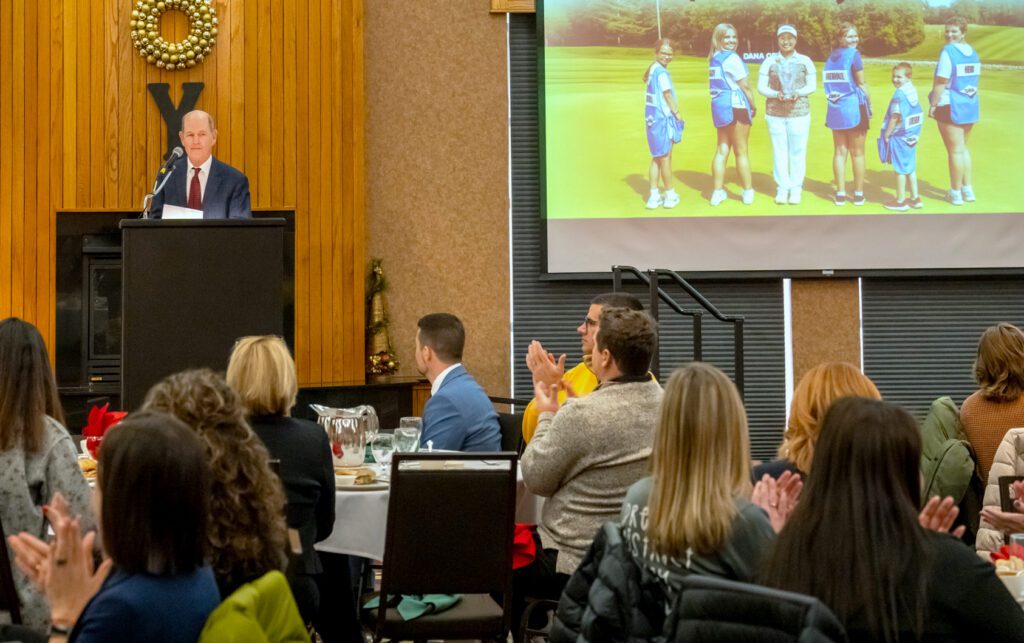
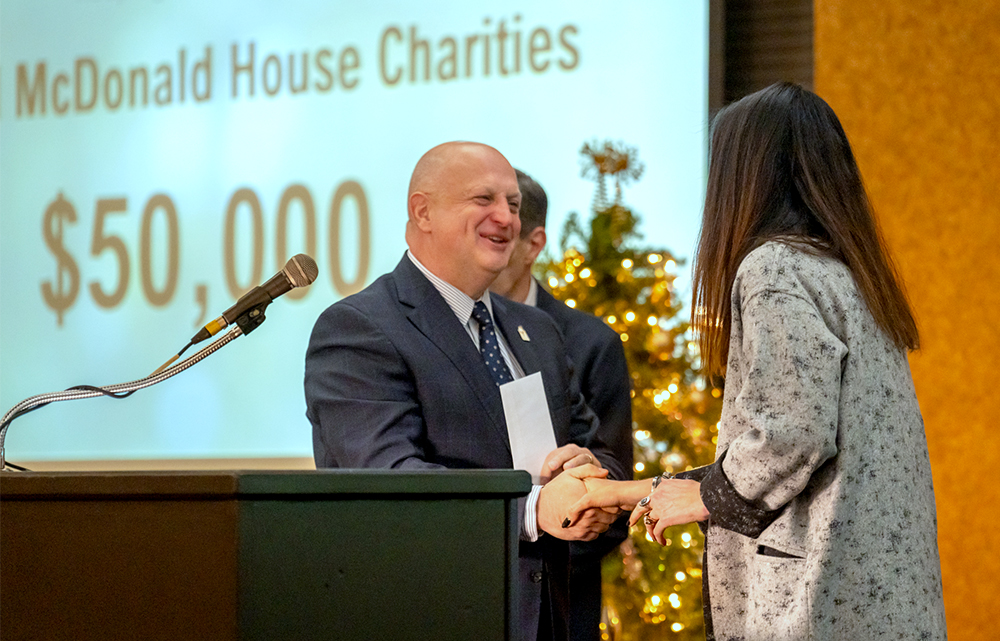

“With $335,000 being distributed from the 2024 Dana Open, we hope the total dollars generated will reach over $15 million after the 2025 event,” he said.
The Greater Toledo Classic will be held July 21-27. It’s a dual tournament and will feature 102 EPSON Tour players and 42 familiar LPGA Legends, who Toledo golf fans have watched for years.
It will be contested over 54 holes at Highland Meadows. In a unique twist, one Legends Tour player will be included in each threesome, with two EPSON Tour players, for the final round on Sunday.
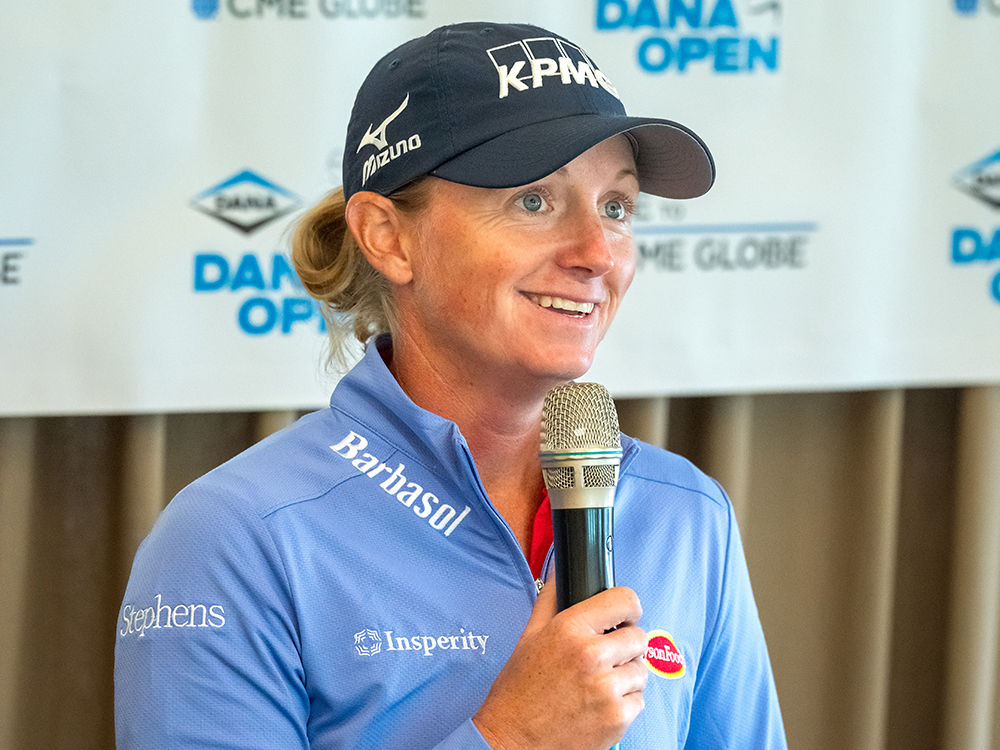

Stacy Lewis, born in Toledo, 13-time LPGA winner and captain of the successful Solheim Cup Team the past two years, has participated in and supported the Toledo LPGA tournament since her amateur days at the University of Arkansas.
“It’s an honor to lend my name to this event and keep professional golf and the LPGA in Toledo. Most importantly, this event will celebrate our past while preparing the future LPGA stars,” she said.
“In addition to the dual tournament, we plan on having events for the Legends Tour players to spend time with the younger women to take advantage of a great mentorship opportunity,” she noted.
“We hope those relationships extend far beyond the week of the tournament. This new event is a fantastic opportunity for the golf fans in the Toledo area to see familiar faces from the past 40 years,” Lewis said.
Tournament week will include four pro-ams, the Women’s Leadership Summit, and other events local golf fans have come to enjoy.


“We are happy to bring the Legends of the LPGA together with the future stars of the LPGA in a never- been-done-before format featuring two tournaments at the same time,” explained Silverman.
“After 40 years, we thought it was time to try something different that will bring back many of the players that have competed in Toledo over the years, along with the up-and-coming future LPGA stars,” he said.
“We’re incredibly grateful to Stacy Lewis agreeing to serve as tournament host. Her exceptional leadership has been on full display the past two years as the U.S. Solheim Cup captain. Her presence will be a huge benefit to the EPSON Tour players.”


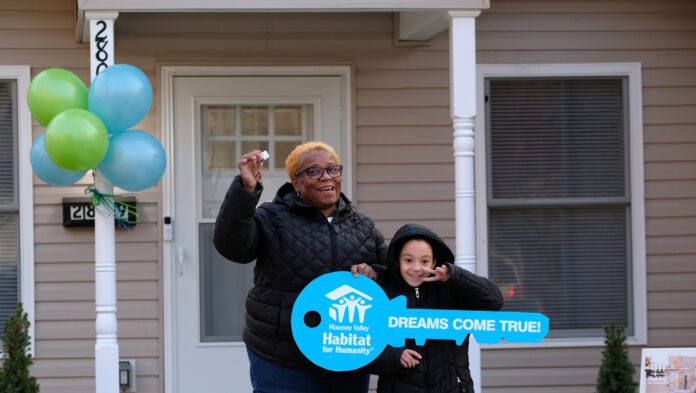

Story by Stephen Zenner | Photos by Lori King
TOLEDO – Clutching a house key and a Bible, Carla Savage took a moment to thank her family and supporters for helping her become the proud owner of a single-story house she helped build on Piddock Rd. in Toledo.
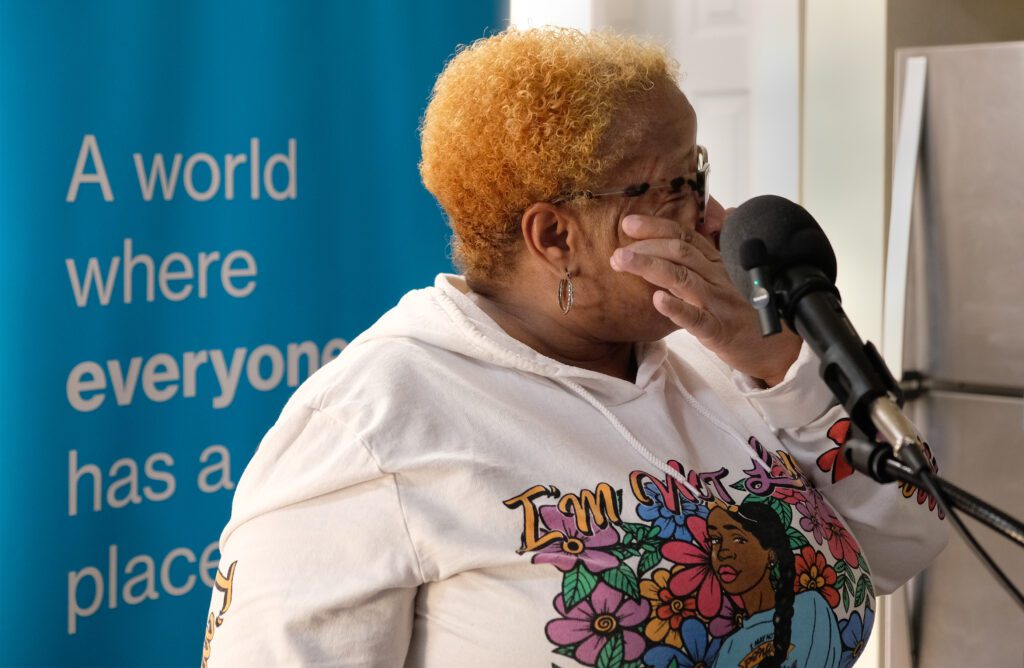

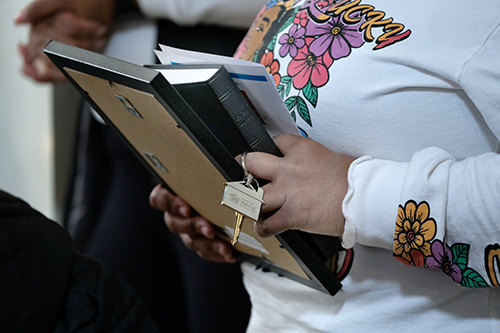

“I thank God for this because without him none of this would be possible in my life. I got to recognize that,” Savage said during her home dedication ceremony on Dec. 6. “I’m just so grateful for all of you for helping me make my dream come true of being a homeowner and for generational wealth for my family.
“I’m proud of myself that I actually did it. There were some days I was ready to throw in the towel,” she admitted as she as she continuously wiped away tears.
The home officially became hers just hours before the ceremony, when she signed paperwork to seal the deal with Habitat for Humanity’s Homeownership Program. The program, in partnership with Owens Corning for more than 20 years, provides a zero-interest mortgage loan to families in need of decent and affordable housing.
Through this partnership, Owens Corning has replaced more than
375 roofs in Lucas County and built 21 homes with MVHFH. Owens
Corning also helps provide shelter around the world through their support
of Habitat for Humanity International.
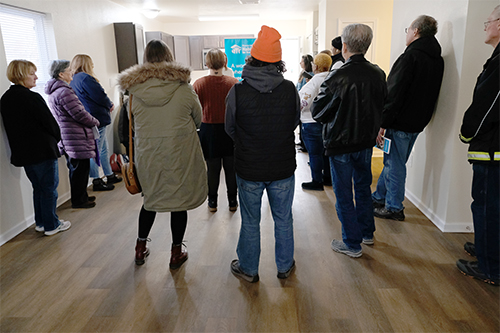

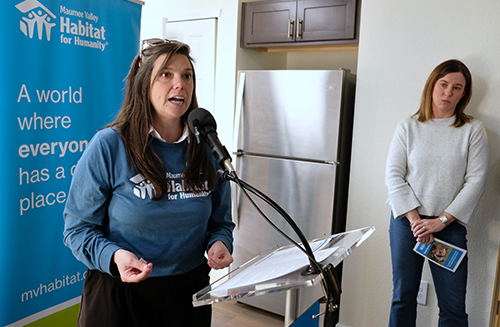

Erin McPartland kicked off the ceremony by saying she was excited to celebrate Savage’s homeownership journey with her. “Isn’t this a beautiful home? These are just beautiful homes we’re building, and for you Carla, it’s right in time for the holidays, so we’re so excited for this.”
McPartland, executive director of Maumee Valley Habitat for Humanity (MVHFH), noted that Savage’s build was special because it was the 21st build in partnership with Owens Corning. “Our mission states that we seek to put God’s love into action by bringing people together to build homes, communities and hope. Owens Corning exemplifies our mission.”
McPartland explained that every year Owens Corning partners with Habitat to help build and preserve homes in the community. She said the impact Owens Corning has on their mission is immeasurable – between the financial and in-kind contributions, and all the employee hours and volunteer engagement they give us. “Your impact can be felt across so many different families, so thank you Owens Corning for all you do. You are God’s love in action.
“And so, while this dedication is a time to love on our donors, Owens Corning and all of our volunteers and staff, it’s also a time to really love on Carla and talk about all the work you put into getting to this point, so, here to do that is Emily,” McPartland said before trading places behind the podium with Emily Buller, program director for MVHFH.
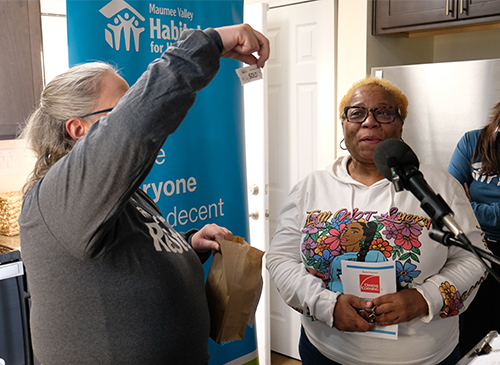

“Alright Carla, so you have been in the program for 26 months. You completed 301 sweat equity hours and attended 18 classes, which talked about home maintenance, financial wellness and lots of other topics about homeownership, so you did awesome,” Buller said to Savage.
“I know there have been times that have been hard during this program, but through it you never gave up,” she continued. “Life hasn’t always been easy for you, but you have a lot of faith, and you pray a lot, and that has gotten you through a ton. I know that home ownership has always been a goal for you, but now, with Samantha, you really wanted to provide that stability for her and a place where she could call home even when she is an adult; she can come home to this place, always.”
During the program Savage was presented with a Bible from her father, Harvey Savage, Jr., who blessed the space, and home-warming gifts from Needle Arts Guild and ReStore.
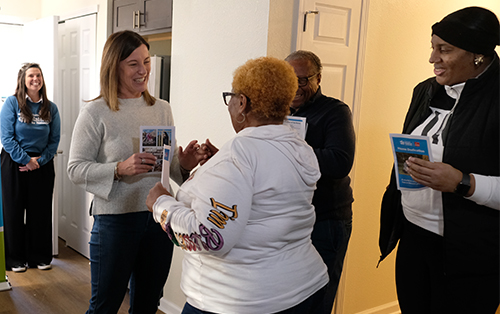

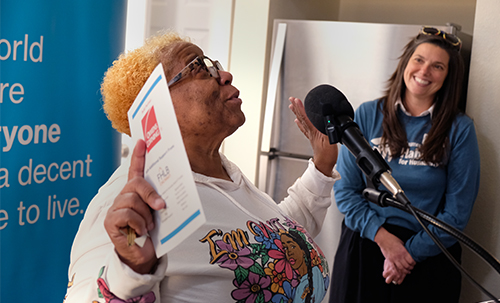

“Today’s the day to take a minute, take a deep breath, and celebrate that because you have done the work you have put in the time, and because of that we’re standing in your home,” said Lauren Clarke, strategic marketing leader with Owens Corning and a board member with Maumee Valley Habitat for Humanity.
With those words, Clarke handed Savage her new house key.
“I’m so just grateful it’s over … Jesus, now I gotta move and that’s gonna take about a week or two,” Savage said to laughter. “I’ll start tomorrow but I ain’t gonna be done tomorrow. I know it’s gonna take me at least a week, but I’m grateful and I thank God and I thank all of you. Thank you. Thank you.”
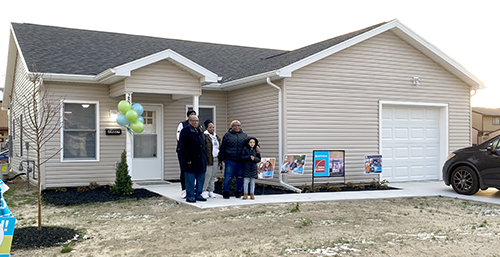

By Trinity Gonzalez | Toledo resident
Being a young adult in 2024 is truly challenging. Almost every young adult seems to be at a loss on how to manage in today’s society while being completely independent. We are constantly criticized by our elders about being “irresponsible,” with no words of wisdom or guide on how we can improve upon ourselves.
Although financial independence and personal stability are goals for many, the current economic and social landscape has made this transition increasingly difficult.
Young adults are also put down by their peers, as well as other adults, about the fact that more and more of us are still living at home. It has become some unspoken rule over the last few years that if you live at home in your 20s, you are “lazy” or “unmotivated,” when it is more common now than ever before.
Expenses have increased so much in the last few years. Being on your own and paying all your bills is a real struggle for most, not just young adults, but we are expected to be able to do it. We are told how lazy we are, but most of us are working 30+ hours a week while in school and managing to pay some bills.
This is why most of us choose to live at home; it is hard to juggle everything while still trying to build a career, all while learning how the adult world really works. Let’s not forget how overall expense prices keep climbing faster than our wages, making financial independence even harder to reach.
Additionally, inflation has impacted everyday expenses, from groceries to transportation, squeezing budgets and making even basic living costs challenging to manage. Most of us end up working in basic-wage, entry-level jobs, making saving for the future inevitably hard and not matching the rising costs of everyday goods. This usually makes young adults feel inferior and limits our ability to invest in our own long-term plans.
Beyond finances, student loan debt looms large. The cost of higher education has left many with significant debt, which hampers our financial mobility as we start out. Although repayment options exist, the weight of this debt affects choices like renting an apartment, buying a car, or starting a family.
Young adults today are willing and eager to contribute to society and build secure, independent lives, but the economic realities of 2024 make it exceedingly difficult.
Policymakers and communities need to recognize these unique challenges and work to create affordable housing, provide economic support, and consider debt relief measures to help young adults achieve financial independence.
We aren’t looking for handouts, just a fair chance to thrive. Let us all be the change and help create a society where young adults can thrive, not just survive.
Cartoonist Don Lee penned this cartoon to memorialize the books and comics lost at Monarch Comics due to a fire that spread through Colonial Village strip mall, near the intersection of Heatherdowns Blvd. and Key St., in the early morning hours of Dec. 9.
The fire, which also damaged Shawn’s Irish Tavern and Sebastiano’s Italiano Restaurant, caused disruption, but the owner of Monarch Comics, who deemed the store a total loss, vows to return by the beginning of next year, according to their Facebook page.
Monarch Comics has been serving the Northwest Ohio area for over 30 years, providing the best selection of comic books and comic book related items combined with the best service in the area.
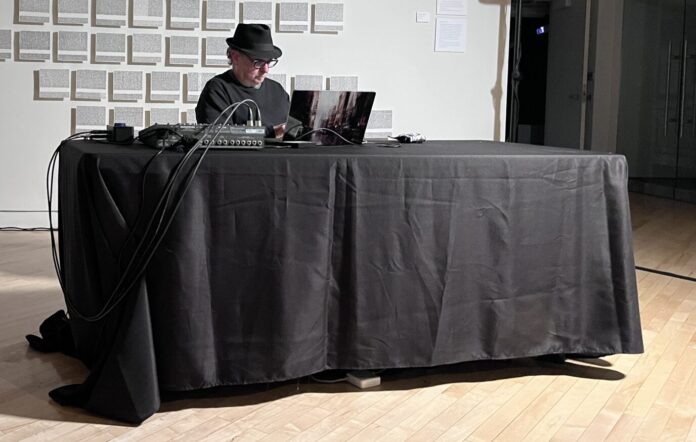

BOWLING GREEN – When Carl Stone steps into the spotlight, dressed all in black with black-rimmed glasses and a black fedora, he appears to be a quiet, unassuming, cool jazz cat. You wouldn’t think of him as a disrupter, but beneath his stoic exterior, that’s exactly what he is.
Stone is a 71-year-old artist and composer who, since the 1970s, has been using digital samples and computers to create songs that defy words and musical definitions.
In concert Dec. 2 at Bowling Green State University, Stone’s only instruments were a small laptop computer and an iPad.
Staff and volunteers had to keep adding chairs as more and more people – a total of about 60 – ambled into the Dorothy Uber Bryan Gallery/Fine Arts Center, vying for vantage points around the partial walls of art displays and a large sculpture in the middle of the floor.
After being introduced by Kurt Doles, director of the MidAmerican Center for Contemporary Music, Stone picked up his iPad, acknowledged the boisterous applause with a nod and a smile but no words, and opened the concert with Kurihara, the first of eight electronic tunes he would spin over the next hour and 15 minutes.
The song floated into the air on gentle waves of rising, falling, climbing and sliding tectonic textures, propelled by steady but spare drumbeats and occasional clicks and crashes, all interwoven with sampled human voices that glided through the rhythmic mix.
Stone stood behind a black-draped table holding the iPad in both hands, touching or sliding a thumb across the screen to change up the mix of prerecorded sounds. He stared intently at the screen as he manipulated his sonic collages, at times bobbing his head, swaying his body to the rhythm, or leaning forward and backward into the musical mix.
Most of the songs presented that night, Stone said later in an interview with the Toledo Free Press, were so new they have not yet been titled.
The second song was startlingly loud and aggressive, a controlled cacophony of electronic samples that started with a snappy drum beat, then quickly plunged into undulating keyboard tones with robotic syntax.
Some of Stone’s compositions featured beats and harmonies built on earthy, world-music foundations, swirling with the funky rhythms and intricate vocal harmonies of Soweto and South African folk music.
Others soared into the stratosphere with baroque elements mixed with waves of sci-fi tones, somewhat like a group of holographic monks chanting in a jungle on Pandora.
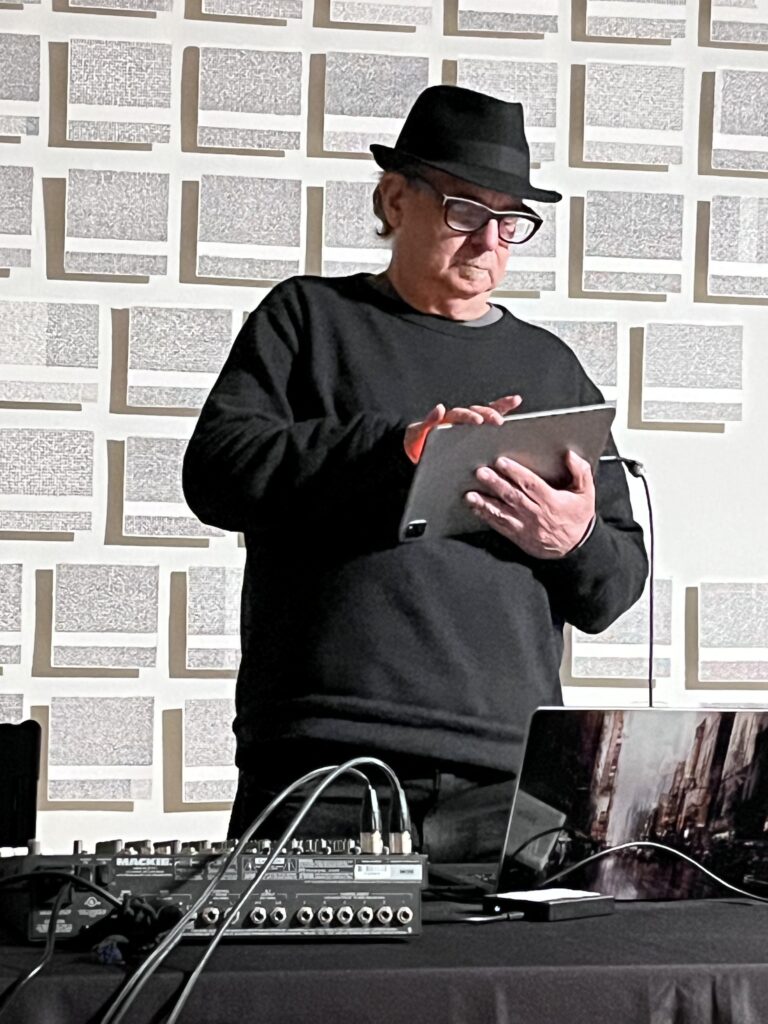

One of Stone’s new songs began with a snappy jazz drumbeat that segued into layered orchestral samples washing across snippets of “dooby dooby doos” and other vocal slices from the crooner classic Strangers in the Night.
There were always multiple layers of action and tones, rhythm and beats, moods and emotions – sonic collages that could serve as the backdrop for Christopher Nolan’s next Inception.
Stone did not talk about or explain his music to the audience. The only spoken words during the concert were “Thank you” and “Thank you very much” as the audience clapped and cheered at the end of each tune.
In an interview after the concert, Stone said that the iPad is “just a controller” that he uses to adjust the sonic samples.
“I’m mixing, but it’s more than just mixing; it’s live processing,” he said. “So, I have samples that we recorded on the hard drive, and I play them back and manipulate them in real time.”
That combination of recorded samples and live mixes means every song is unique to the moment.
“The pieces at this point are kind of structured, and they are worked out in advance, but the note-by-note details can be different every time,” Stone said.
He noted that none of the vocals in his music are synthesized; they are all sampled.
Stone has won numerous awards for his compositions and has performed concerts around the world. A native of Los Angeles, he divides his time between L.A. and Tokyo.
One of the pioneers of electronic music, Stone said that when he started in the 1970s, he was using synthesizers and tape recorders to compose.
“The technology has evolved so much. Back when I started, you needed a studio that cost many hundreds of thousands of dollars in equipment. Now the power of that studio can be found in an iPad app for $25, probably.”
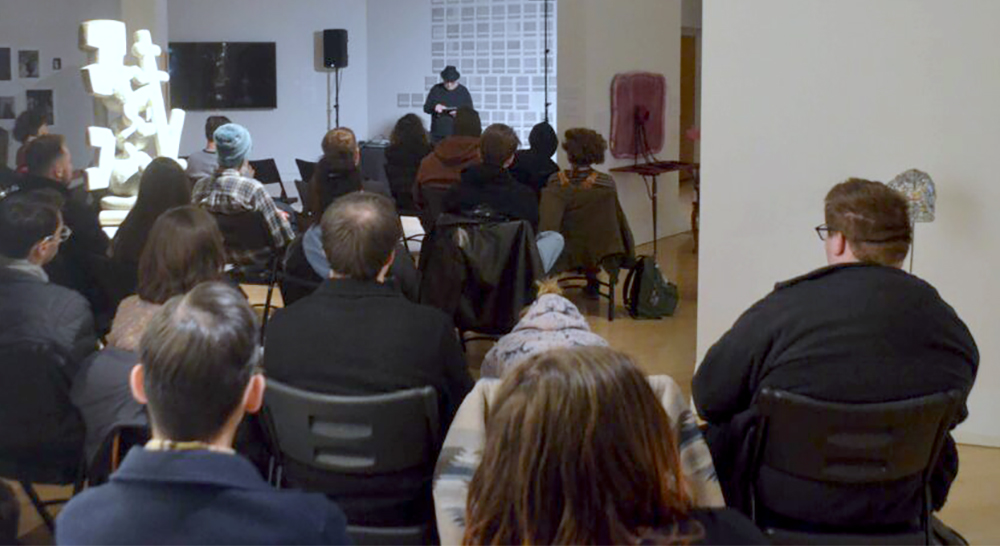

“I loved it,” Amberlin Leonard said after the show. “I’ve been listening to him for a couple of years now. His mixes are so diverse that it creates an interesting world.”
Leonard said she lives in Detroit and made the 90-mile drive to Bowling Green to see Stone live.
“I’m a fashion designer so I really, really like the diversity of his music. That’s how I create fashion, with mixes of different eras and different cultures, so I relate to his music a lot. Most of the time I tend to like his more ethereal mixes and pieces, because it’s lighter, but I’m still moved and inspired by it. But I enjoyed seeing the more loud and intense and chaotic pieces live. It’s probably the most awesome thing I’ve seen in a long time.”
She said that the way Stone used vocal samples on Strangers in the Night reminded her of the way the late DJ Screw sampled Phil Collins‘ vocals on “In the Air Tonight.”
Doles, who said he has been friends with Stone for about 30 years, last brought the composer to BGSU in 2014.
“I like to bring him around every decade or so just to stir things up. I think it’s very important that our students hear what he has to say. Because he uses just a laptop and he uses samples as his primary input, it makes him very unique.”
He added with a laugh that Stone’s compositions sound something like “pop music from Venus.”
More information on Carl Stone can be found online at rlsto.net.
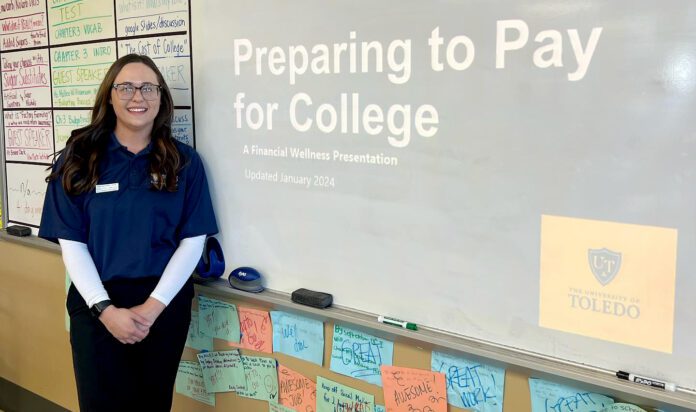

TOLEDO – It was all fun and games when UToledo’s Special Accounts and Financial Wellness Office recently partnered with the Northwest Ohio Credit Union Alliance for a serious lesson about finances.
Finances 101, an interactive simulation game of real-life situations, prepares high school students for financial literacy. Designed to teach the students about the financial demands of adulthood, it attracted more than 500 students from the local area. Northwest Ohio Credit Union Alliance plans to host similar local events in 2025.
Luke Grable, community outreach and education coordinator of Directions Credit Union, explained how the game works >
- The student is given a piece of paper that lists their jobs; if they have a spouse; if their spouse works; their taxes; and their student and credit card debts.
- From that point, the game simulates events, such as having children or enduring medical emergencies.
- Throughout the game, students make decisions about their finances while adding and subtracting from their allowance.
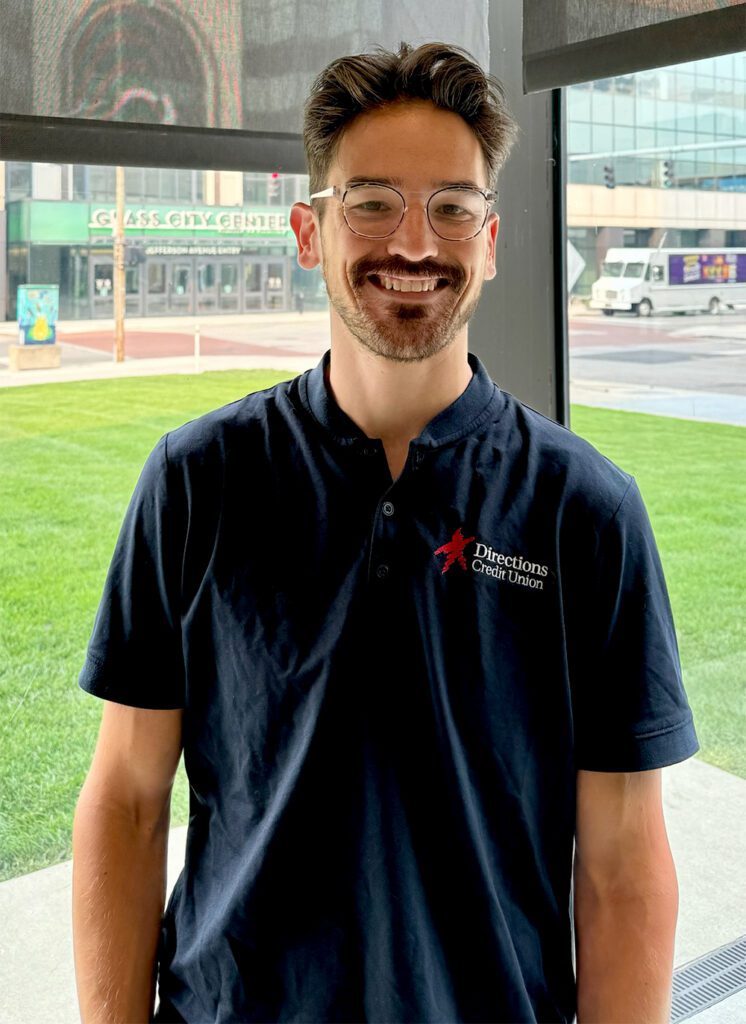

Grable said that in this game, “we’re giving you sort of the worst case scenario at times, and obviously not just take things too personally because this is all just a scenario. Some prosper, some don’t prosper, but ultimately the goal is to create a conversation and hopefully bring to light what opportunities exist for them as an adult.”
Mollee Williamson, financial wellness counselor at The University of Toledo, added what she felt the event offered the students.
“Finances 101 offered a fun way for students to understand the financial concepts and financial demands of the real world,” she said.
The partnership between the university and the Northwest Ohio Credit Union Alliance was forged when Williamson approached them last year about putting on the event. She attended the event at Bowling Green to observe, and she was interested in the work they were doing.
“I think it’s very important because it can be very taboo to talk about money,” said Grable. “People are holding on to those misconceptions about money from such a young age, and once they become an adult, they have to reorganize those ideas into what can actually work for them functionally as an adult.”
Finances 101 is presented several times each year throughout northwest Ohio. Grable explained it is done in a partnership with Sun Credit Union, with the next event being held at Bowling Green State University with a tentative date of March 11. The next one at Utoledo will likely be in October.
For any group in Toledo interested in learning about finances before next October, Williamson presents a variety of financial topics for high school or college courses, student organizations, local community organizations, or community events on behalf of the UToledo Financial Wellness department.
The most popular topic is Preparing to Pay for College. Willamson explained that this course goes over the expected cost, the key terminology in regards to the cost of attending, along with resources to reduce the amount that you’re paying out of pocket.
The second most popular presentation is the Budgeting Basics presentation. This course offers a similar activity to Finances 101 but on a smaller scale that is more intimate for local area high schools.
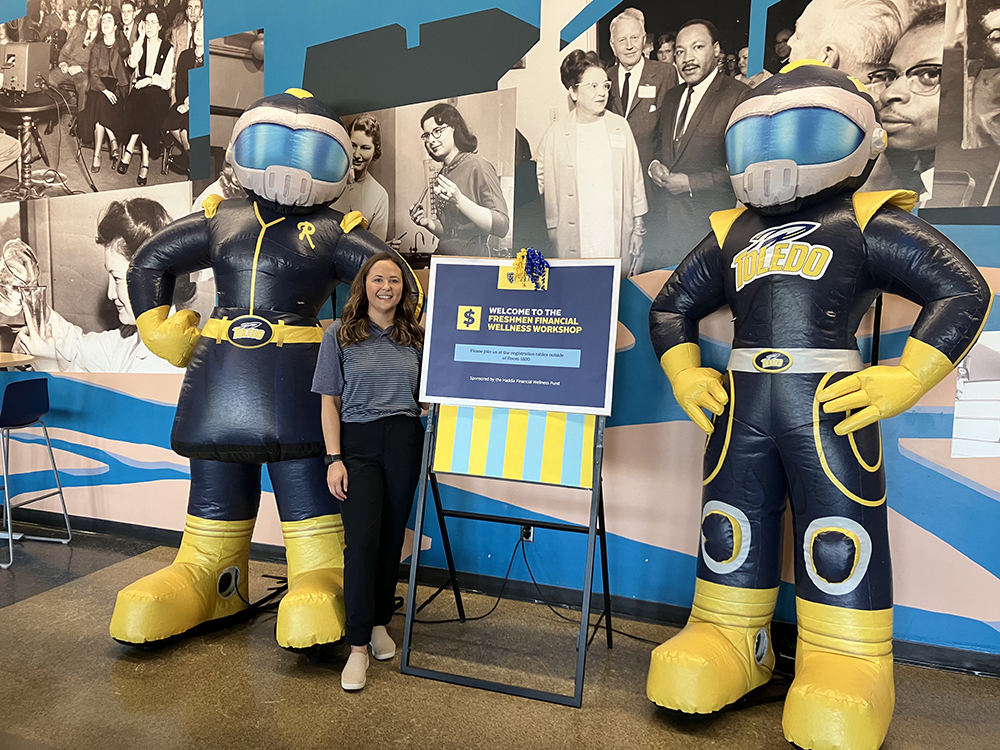

Other presentation topics include planning and money management, risk management, and custom presentations and workshops. Some presentations include a worksheet that allows them to take the information home and begin a conversation with a parent or guardian.
Williamson said her best financial advice for someone is that planning and money management are life skills, and “you’ll always need to continue to practice, work on it and improve. The sooner you start educating yourself and complementing the financial literacy education you receive, the better off you’ll be to kind of navigate the things life throws your way.“
Schools or groups can sign up for presentations on the University of Toledo website.